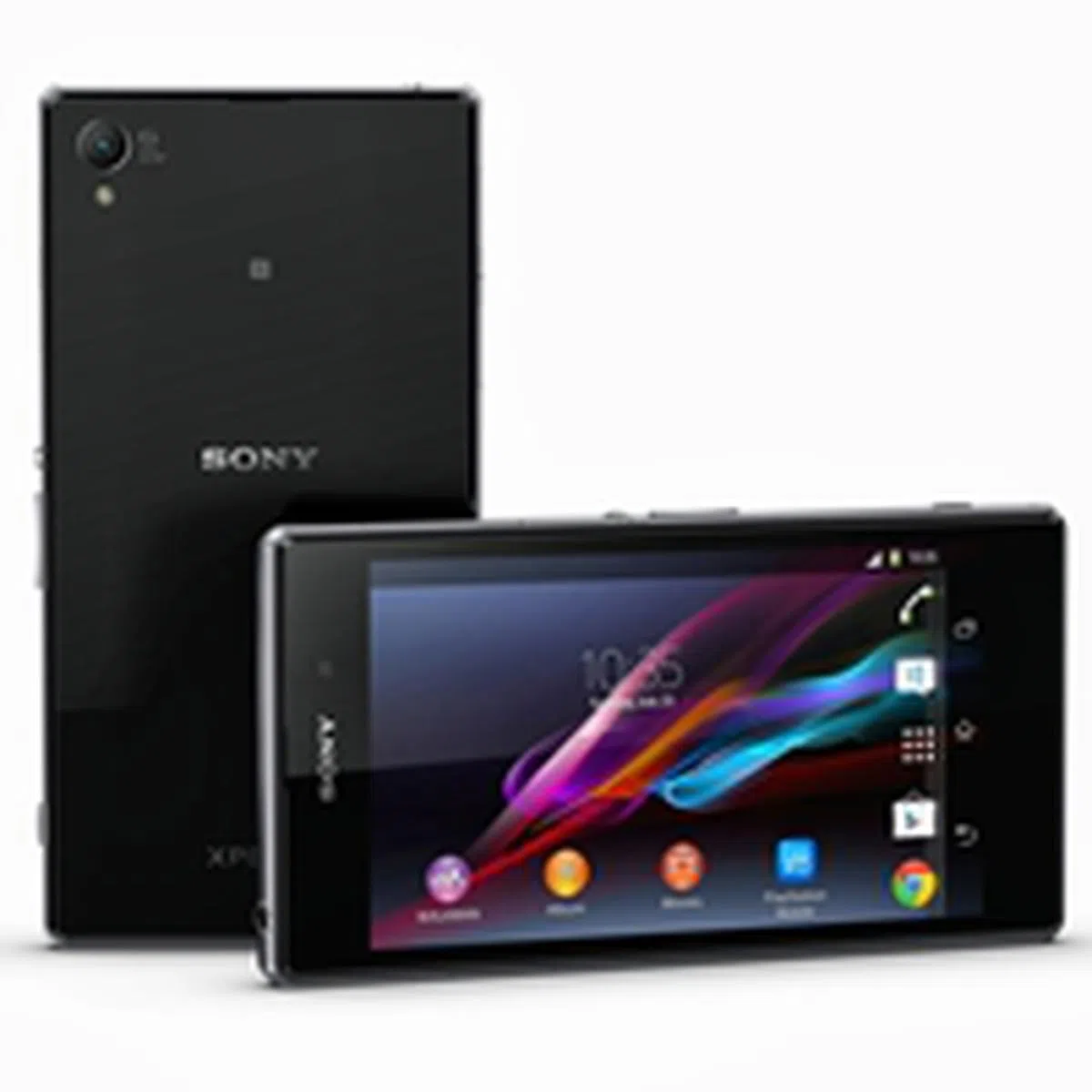Sony Xperia Z1 - The Next Frontier in Mobile Imaging
The launch of the Sony Xperia Z1 comes hot on the heels of Nokia Lumia 1020 and Samsung Galaxy S4 Zoom. Can the Xperia Z1's G lens and suite of camera apps propel it ahead of many other 5-inch smartphone options? Find out in our review!
By HardwareZone Team -
Overview
Formerly codenamed "Honami", Sony unveiled the Xperia Z1 at IFA 2013 last week. Replacing the current Xperia Z as its premium Smartphone offering (the larger Xperia Z Ultra is squarely a phablet), the Z1 touts serious updates in the areas of display quality and more importantly, imaging prowess. As such, the Xperia Z1 is seen as a strong contender for the title of the best camera-centric phone along with its earlier announced competitors such as Nokia's 41-megapixel Lumia 1020 and Samsung's 16-megapixel Galaxy S4 Zoom. All three devices sport camera modules which are leaps and bounds ahead of those found in ordinary camera phones. While such comparisons are hard to avoid and we will be touching on the imaging quality aspects, it's important to remember that the Xpera Z1 is primarily a smartphone competing with other 5-inch 'super phones'. Let's take a quick look at its specs before we dive into the review:-
 | Key highlights of the Sony Xperia Z1
|
Design & Features
(Note: We've done a hands-on article with the Xperia Z1, so we'll summarize the key points here instead of going into great length again.)
In a nutshell, the Xperia Z1 sits in the middle between the monstrous 6.44-inch Xperia Z Ultra and the more handy 5-inch Xperia Z. Due to its larger battery capacity (relative to the Xperia Z) and a more advanced camera module, the Xperia Z1 is a tad longer than the Xperia Z and is the thickest among the lot at 8.5mm. However, the Xperia Z1 is by no means chunky; it is still very portable thanks to Sony maintaining the OmniBalance design aspects.

Seen here are the Sony Xperia Z(left), Xperia Z1 (center) and Xperia Z Ultra (right).
Unlike the Xperia Z and Z Ultra which have a small LED notification light on the left side of the SONY logo, the Xperia Z1 sports a short strip of LED lights above the logo. We feel this implementation is more visible.
We also spotted a new button on the bottom right side of the Xperia Z1 - a dedicated camera shutter button. Besides using it to take photos, you can activate the camera from the lock screen or any home screen by pressing and holding the button for about two seconds.
Software
Aside from its Xperia camera apps, the Xperia Z1 has the same software features as the Xperia Z Ultra such as Quick Settings, lock screen widgets and Small Apps. You can get acquainted with these software features here.
5-inch Triluminos TFT Display
Similar to the Xperia Z Ultra's 6.44-inch display, the Xperia Z1 uses the display technologies from its TV line-up - Triluminos screen technology and the X-Reality display processing engine. For a more detailed explanation of the screen technologies, do check out the article here. Generally, we liked the 5-inch Full-HD display of the Xperia Z1 and as highlighted in our previous hands-on article, the washed out viewing angles of the Xperia Z or non existent on the Xperia Z1, which is a definite plus point to legibility and usability.
Camera Performance
Sony G-Lens with 27mm wide angle lens, F2.0 aperture, 1/2.3" 20.7MP CMOS Sensor
As mentioned in our first looks article, the Sony Xperia Z1 packs the third-largest sensor that can be found in a smartphone today after the Nokia Lumia 1020 and Lumia 808. In fact, its sensor size is similar to those used most compact cameras. Will it live up to the performance set by some of the better compact cameras? We'll dwell into that in a dedicated article, but for now, we take a quick look at the Xperia Z1's performance alongside the Lumia 1020:
 |  |

This is the Sony Xperia Z1's full sized 20.7MP image. Image grain is very noticeable and harsh. However, if you shoot in well-lit conditions (bright outdoors), the camera performs rather well and can easily match any other digital compact camera. Click to view the full sized image.

This is the Nokia Lumia 1020's full sized 34MP image. As you can image quality is superb, with good color reproduction and depth, and plenty of detail preserved, even when zoomed in.

And this is the Nokia Lumia 1020's PureView 5MP image. Surprisingly, Nokia's PureView functionality works out really well as there's almost no difference between the 5MP PureView shot and the 38MP high-res original. Even when zoomed in, both look remarkably similar. Of course, if you view both images at full size, you'll be able to zoom in further on the high-res image as linked in the above photo.
For a complete rundown of the Sony Xperia Z1's imaging performance and camera app, do check out our dedicated article on Shooting with the New 20.7MP Sony Xperia Z1. But to summarize it, here's an extract from our resident camera expert and Associate Features Editor, Alvin on what he has to say about the 20.7-megapixel camera sensor of the Xperia Z1:
Alvin - "the Z1's image performance is a mixed bag which weighs mostly positive ... In good light, the images are rich and full of detail, at a level beyond your ordinary mobile phone."
Benchmarking Performance
The Xperia Z1 runs on Qualcomm Snapdragon 800 quad-core 2.2GHz processor and 2GB RAM, which puts it on par with the Xperia Z Ultra and many recently announced devices such as the Samsung Galaxy Note 3 and the LG G2.
The Snapdragon 800 processor consists of the upgraded Krait 400 CPU architecture (vs. Krait 300 CPU on the Snapdragon 600 processor) and the latest Adreno 330 GPU. Each core is able to support higher clock speeds of up to 2.3GHz and the Adreno 330 delivers up to 50% increase in graphics performance compared to Adreno 320 (found in Snapdragon 600 and S4 processors).
We will be pitting the Xperia Z1 up against the other 5-inch rivals such as the ASUS PadFone Infinity, HTC Butterfly S and Samsung Galaxy S4. We also threw in the Xperia Z Ultra to see if there is a disparity in performance between the two Xperia devices.
Quadrant

Quadrant evaluates a device's CPU, memory, I/O and 3D graphics performance. As expected of the Snapdragon 800 processor, the Xperia Z1 blew the competition out of the water with its score of 20,474.
It is noteworthy to mention that the Xperia Z1 currently has the highest Quadrant score although its reign at the top may be short lived since the Galaxy Note 3, LG G2 and perhaps the Galaxy S4 LTE-A make their way into the market soon.
One oddity that we noticed was the drastic difference in the scores between the Xperia Z1 and Z Ultra. Both devices are powered by the same processor with the same screen resolution, yet have different results. For now, we don't quite have an answer to the discrepancy, but we hope to find out as we progressively test more products with this processor. On a positive note, we're glad to report that the score achieved by the Xperia Z1 is well representative of this platform as a reference Qualcomm tablet running the Snapdragon 800 processor scored 20,808.
3DMark Results

Originally developed as a PC benchmarking tool, 3DMark is now expanded to support multiple platforms including Android OS. The Ice Storm benchmark is designed for smartphones, mobile devices and ARM architecture computers.
For an in-depth understanding of 3DMark for Android, do head over to our article, "3DMark - Android Device GPU Performance Review." In a nutshell, 3DMark consists of two test sections:
3DMark Ice Storm is an OpenGL ES 2.0 benchmark test that uses fixed off-screen rendering at 720p then scales the output to fit the native display resolution of your device. Ice Storm includes two graphics tests designed to stress the GPU performance of your device and a physics test to stress its CPU performance.
3DMark Ice Storm Extreme raises the off-screen rendering resolution to 1080p and uses higher quality textures and post-processing effects to create a more demanding load for the latest smartphones and tablets.
It should be apparent by now that the Snapdragon 800 processors take the lead from their Snapdragon 600 counterparts. Both the Xperia Z1 and Z Ultra led the pack with significant margins, and are on-par with each another.
SunSpider Javascript Results

SunSpider Javascript measures the browsing performance of a device. It not only takes into consideration the underlying hardware performance, but also assesses how optimized a particular platform is at delivering a high-speed web browsing experience.
Once again, the Xperia Z1 and Z Ultra take the lead in the SunSpider Javascript benchmark. There is no doubt that the Snapdragon 800 is currently the most powerful mobile chipset in the market. Yes, even compared to the NVIDIA Tegra 4 as we saw from the review of Toshiba's Excite Write 10-inch tablet.
Synthetic benchmarks aside, the performance of the Xperia Z1 was very smooth and fluid. We encountered no lags while using the phone on a daily basis. Web browsing was also snappy.
Battery Performance
Our standard battery test for mobile phones has the following parameters:
• Looping a 800 x 480-pixel video with screen brightness and volume at 100%
• Wi-Fi and Bluetooth connectivity turned on


In our looping video playback test, the Xperia Z1 managed a battery uptime of close to six hours, which is considered mediocre in its class. For example, the ASUS PadFone Infinity and Samsung Galaxy S4 could last longer despite having smaller batteries.
Looking at the Power Consumption chart, it becomes apparent that Sony's mobile devices still drain battery juice faster than its peers. Its power draw of 1.89W is the highest in the 5-inch phones compared, though it is slightly improved over the original Xperia Z smartphone.

In the Portability Index where each device is assessed on its ability to balance battery mileage against its size and mass, the Xperia Z1 ranked last in its class as it is not the slimmest, but it is one of the heaviest. Coupled with its mediocre battery mileage, it is not hard to guess its poor standing in the Portability Index. On a related note, the older Xperia Z fared slightly worse with a ratio of just 0.35.
*Updated on 14/9/2013
To give you a more realistic understanding on how the Xperia Z1 fared under real world usage conditions, we included screenshots of the usage and history graphs which are available on Android 4.0 and later devices.

The Sony Xperia Z1 could last a day of usage at work.
As seen from the graph above, the Xperia Z1 could last a day of usage. Some notes: -
- The device logged onto a 3G network as the SIM card used does not support 4G LTE.
- The device logged onto Wi-Fi connections from time to time.
- Stamina Mode was not enabled throughout the day.
Our typical usage scenarios include making some voice calls, texting via WhatsApp, taking some photos and sharing them on social networking sites (Facebook and Instagram), and emailing.
Living Up to The Hype?
Does the Xperia Z1 have what it takes to differentiate itself from the other two camera phones mentioned at the start of our review? Our answer is a definite yes. If you look around the competition right now, we are hard pressed to find an equal.
The Xperia Z1 is the only flagship device we've seen so far with water/dust-proof properties, a relatively large battery, a unique design and a capable camera module. There is simply no other Android flagship device in the market at the moment that can come close to matching what Sony has offered on the Xperia Z1. Samsung's Galaxy S4 Zoom on the other hand acts more like a camera with phone functionality than the other way around and is a fair bit bulky.
While the Xperia Z1's imaging capabilities fell short of the Nokia Lumia 1020's lofty standards, it performs as well as a standard digital camera and much better than other smartphones. It's not far-fetched to say that with the Xperia Z1, you can finally put off the purchase of a compact camera and just bring the phone everywhere you go.
There's also a strategic edge that the Xperia Z1 has over the Lumia 1020 - apps. Running on the world's most popular operating system, the Xperia Z1 gives you access to a rich library of apps, most of which are yet to be found on the Windows Phone ecosystem. Even though Windows Phone has caught up quite a bit over the past two years, app availability is still a concern and isn't as established as the Android or iOS ecosystem.
Putting the focus back on the Xperia Z1, we actually expected more from Sony's G lens. Our hopes were high on the Xperia Z1 standing shoulder to shoulder with the Lumia 1020, but there is certainly room for improvement. Its battery performance is still a sore point for us, and Sony really needs to pull up its socks on better power management on its mobile devices. Nonetheless, Sony has a very strong footing this time with the Xperia Z1 and we foresee it holding the fort comfortably against the upcoming LG G2 and Apple iPhone 5S. Already it is a leader among the existing 5-inch smartphones as far as platform processing prowess is concerned. Overall, you could say the Xperia Z1 is quite a good successor to the original Xperia Z as it has made substantial improvements on on all fronts.
Our articles may contain affiliate links. If you buy through these links, we may earn a small commission.